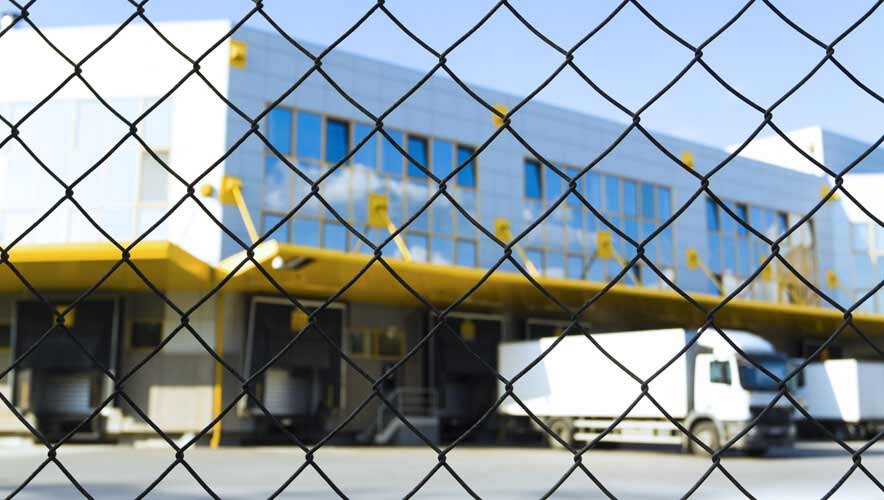Developing a Layered Defense to Harden Facility Security
Whether your organization is large or small, public or private, there are basic security tactics that can protect your building and occupants from unwanted attention or attack.
The goals of hardening are to deter, deflect, divert, and deny. You always want to project the image of a secure, impenetrable operation to someone conducting preoperational surveillance, passing by as part of a group during a protest, or looking for a crime of opportunity with no premeditation. Hardening is an offensive security measure; it stops the fight before it starts.
U.S. military bases are protected by using layered defense or rings of security, a technique easily cross-applied to other organizations. Consider the center ring as protecting the most precious asset—possibly leadership, important records, or special equipment, such as servers. If the bad actor can make it here, he or she would inflict the maximum amount of damage. The ring just outside the center includes employees, the front desk, cafeteria space, and visitors. The third ring is the public space outside the entrance, such as parking areas, sidewalks, open spaces, or woods. The next layer consists of streets, public transportation, pedestrians, and businesses. Finally, the outer ring encompasses the surrounding community, including social media—an important virtual community.
Each ring presents an opportunity to harden, offering the chance to create an obstacle or tripwire against bad actors. Working from the outside-in, consider the security language used on your website and in event advertising, such as “plan extra time for bag checks.” This portrays a heightened level of security that may serve as a deterrent. Use free applications that search social media for threats to your property, organization, or leadership. This extends your situational awareness; for example, a shopping mall client using this service was alerted to a large group of teenagers planning a destructive flash mob on Twitter.
Next, build relationships with those on your perimeter. When I was the Vice Commander at Andrews Air Force Base, the home of Air Force One, I knew the managers of the hotels, fast food franchises, and gas stations surrounding our property. They were force multipliers, my eyes and ears outside the wire; if someone was conducting surveillance or discussing a plot, their help could provide early—or sometimes the only—warning. This relationship paid off several times, as they served a critical overwatch role, identifying possible danger.
Moving closer to the building, consider the deterrent effect of fencing and bollards—there are many attractive options. Have security-related signage on the property such as “cameras in use,” “regularly patrolled by security,” “private property,” or “no trespassing.”
If you have security personnel, their vehicles should be visible to the public. If not, off-duty police officers will sometimes agree to lend theirs. Security personnel should be on foot, out and about, politely challenging strangers, looking for problems, detecting surveillance, and providing a presence. Don’t forget to secure your parking lot and structures; you must protect employees and visitors, and incidents that start there could bring danger to your doorstep.
In these uncertain times, people want to feel safe, so don’t be afraid to enact security measures. Limit the number of entrances, try to keep exterior doors locked, and use electronic keys, codes, or badges to enter. Have a separate visitor entrance and screening area for quick verification, bag checks, and badging.
Front desk personnel are the next line of defense and must be trained in “verbal judo” or other de-escalation techniques to deal with unauthorized or angry visitors. They should have access to a panic button or hotline to dial 911, and they should not be afraid to use it.
Coming further inward, offices, conference rooms, and restrooms should have doors opening outward into the hallway to prevent being kicked in. Doors should lock on the inside, with either no windows to the hallway or a window shade. Pre-position bottled water and snacks like protein bars in case of an extended shelter-in-place.
Regularly train for crisis and have a communication plan. Talking about threats lessens fear, as people are empowered with knowledge of how to take care of themselves and each other.
By following these steps, your property, its occupants, and your precious assets will be more protected by layers of defense and rings of security. As former CIA and FBI Director William Webster said, “Security is always seen as too much, until the day it’s not enough.”
Dr. Jennifer Hesterman is a retired U.S. Air Force colonel. Her book, Soft Target Hardening: Protecting People from Attack (2nd edition), was the ASIS Security Industry Book of the Year for 2019 and the Social Sciences Professional Book of the Year for Taylor & Francis Group.












